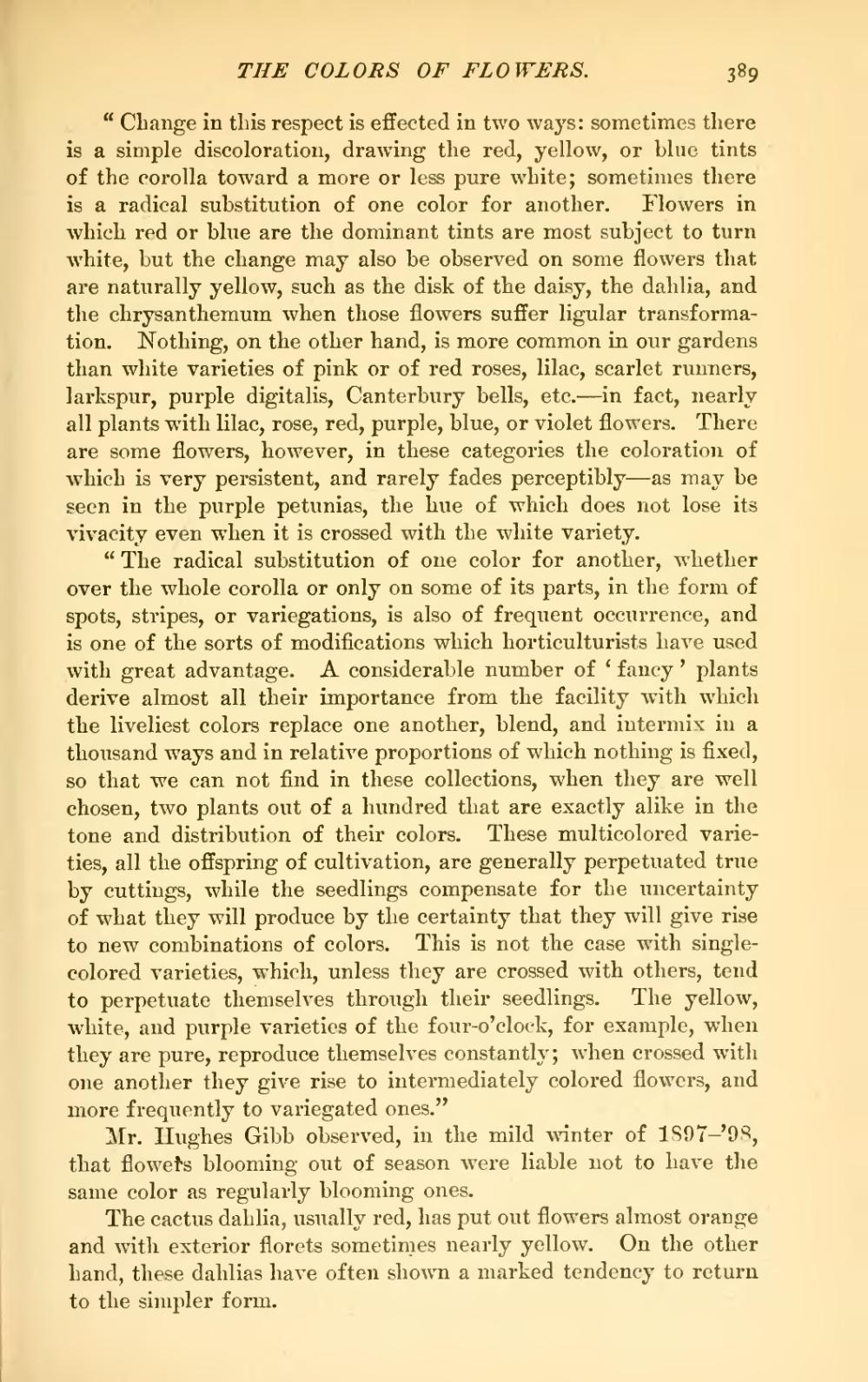"Change in this respect is effected in two ways: sometimes there is a simple discoloration, drawing the red, yellow, or blue tints of the corolla toward a more or less pure white; sometimes there is a radical substitution of one color for another. Flowers in which red or blue are the dominant tints are most subject to turn white, but the change may also be observed on some flowers that are naturally yellow, such as the disk of the daisy, the dahlia, and the chrysanthemum when those flowers suffer ligular transformation. Nothing, on the other hand, is more common in our gardens than white varieties of pink or of red roses, lilac, scarlet runners, larkspur, purple digitalis, Canterbury bells, etc.—in fact, nearly all plants with lilac, rose, red, purple, blue, or violet flowers. There are some flowers, however, in these categories the coloration of which is very persistent, and rarely fades perceptibly—as may be seen in the purple petunias, the hue of which does not lose its vivacity even when it is crossed with the white variety.
"The radical substitution of one color for another, whether over the whole corolla or only on some of its parts, in the form of spots, stripes, or variegations, is also of frequent occurrence, and is one of the sorts of modifications which horticulturists have used with great advantage. A considerable number of 'fancy' plants derive almost all their importance from the facility with which the liveliest colors replace one another, blend, and intermix in a thousand ways and in relative proportions of which nothing is fixed, so that we can not find in these collections, when they are well chosen, two plants out of a hundred that are exactly alike in the tone and distribution of their colors. These multicolored varieties, all the offspring of cultivation, are generally perpetuated true by cuttings, while the seedlings compensate for the uncertainty of what they will produce by the certainty that they will give rise to new combinations of colors. This is not the case with single-colored varieties, which, unless they are crossed with others, tend to perpetuate themselves through their seedlings. The yellow, white, and purple varieties of the four-o'clock, for example, when they are pure, reproduce themselves constantly; when crossed with one another they give rise to intermediately colored flowers, and more frequently to variegated ones."
Mr. Hughes Gibb observed, in the mild winter of 1897-'98, that flower's blooming out of season were liable not to have the same color as regularly blooming ones.
The cactus dahlia, usually red, has put out flowers almost orange and with exterior florets sometimes nearly yellow. On the other hand, these dahlias have often shown a marked tendency to return to the simpler form.
